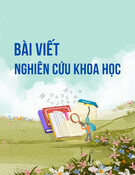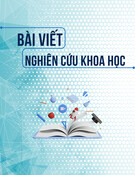
160
SIMILE AND PERSONIFICATION OF “WIND” AND “RAIN”
IN AMERICAN AND VIETNAMESE NOVELS
Luu Quy Khuong; Nguyen Thi Nhu Thao
University of Foreign Language Studies - The University of Da Nang
lqkhuong@ufl.udn.vn
(Received: 10/05/2024; Revised: 04/06/2024; Accepted: 06/06/2024)
Abstract: This study explored the use of similes and personifications to describe “rain” and
“wind” in American and Vietnamese literature from the mid-20th century to the present.
Through a combination of qualitative and quantitative approaches, the study categorized and
analyzed 285 examples of similes and personifications denoting “rain” and “wind” in
American and Vietnamese novels to identify similarities and differences in the portrayal of
these natural phenomena. The findings showed that the American and Vietnamese novel
writers utilized similes and personifications to convey the sounds, intensity, impact on the
human body, emotions, and actions in terms of wind and rain. The author also tried to explain
the differences in the use of these two stylistic devices in the two languages based on cultural
and climatic perspectives. The study offered practical suggestions for those who are interested
in describing wind and rain in American and Vietnamese novels in particular.
Keywords: Personification, simile, novels, rain, wind
1. Introduction
In nature, "rain" and "wind" stand out as natural elements that are closely intertwined
with human emotion and experience, contributing to the richness of literary works. For example:
(1) Gió mưa là bệnh của giời,
Tương tư là bệnh của tôi yêu nàng. [Nguyen Binh, 1940]
Wind and rain are implicitly compared with human lovesickness through metaphor.
(2) Mưa như người giận dai, gầm gừ, xối xả và miên man, có cảm giác mây đen đã kéo cả đại
dương lên trời để bây giờ hả hê trút xuống. [Nguyen Nhat Anh, 2010, p.121]
Example (2) describes the rain “like an angry person” (như người giận dai), combining
both simile and personification to emphasize its intensity. The use of the phrase “hả hê” (gloating)
attributes a sense of satisfaction to the cloud as if it is gloating after having released the heavy
rain.
(3) as that day advanced, the dusk slipped back toward darkness, and the wind cried and
whimpered over the fallen corn. [Steinbeck, 1939, p.9]
In example (3), the wind is personified as it is described as “cried and whimpered”.
Personification gives the wind human-like qualities of emotion, implying that it can express
distress or sorrow. By attributing emotion to the wind, the author turns it into a dynamic force.
Through initial observation of the researcher in the corpus, among the stylistic devices utilized,
similes and personification emerge as the most frequently employed techniques in the depiction
of natural phenomena.

Tạp chí Khoa học Ngôn ngữ và Văn hóa ISSN 2525-2674 Tập 8, số 2, 2024
161
Recognizing the need for comprehensive analysis of the nuanced ideas and emotions
conveyed by personifications and similes depicting “rain” and “wind”, this study aimed to analyze
the usage and impact of similes and personifications in American and Vietnamese novels from
the mid-20th century to the present.
The research sought answers to the following research questions:
[1] What are the similes and personifications depicting “rain” and “wind” used in American and
Vietnamese novels from the mid-20th century to the present?
[2] What are the similarities and differences between American and Vietnamese novels in using
similes and personification to depict “rain” and “wind”?
2. Literature review
2.1 Stylistic devices
Galperin (1971, p.26) defined a stylistic device (SD) as “a conscious and intentional
literary use of some of the facts of the language (including expressive means) in which the most
essential features (both structural and semantic) of the language forms are raised to a generalized
level and thereby present a generative model”. The researcher also stated that most SDs display
an application of two meanings: the general meaning (lexical or structural) which has already
been established in the language as a system, and a specific meaning overlaid on the unit by the
text that occurs in the language context.
2.2 Simile
Pierini (2007, p. 23) defined simile as “the statement of a similarity relation between two
entities, essentially different but thought to be alike in one or more respects, or a dissimilarity
relation”.
According to Galperin (1971), the structural formal elements of simile involve connective
words such as “like”, “as”, “such as”, and “as if”. These words serve to establish analogies
between two objects or actions. Addison (1993) added some more simile formal elements which
are “just as... so”, “so have I seen” or “if... so”.
While both simile and ordinary comparison of equality serve to draw parallels between
the two concepts, they differ in their stylistic effects. Ordinary comparisons are more direct and
straightforward, providing a simple and clear comparison. Similes, on the other hand, often evoke
vivid imagery and create more imaginative associations between the compared elements, adding
depth and richness to the language (Galperin, 1971; Israel, Harding, & Tobin, 2014).
The distinction between simile and metaphor is crucial, as they are often mistakenly used
interchangeably. According to Wales (1989, p.421), “simile is a figure of speech whereby two
concepts are imaginatively and descriptively compared: e.g. My love is like a red, red rose.” In
similes, “like” and “as” are commonly used. While, also for Wales (1989, p.421) “metaphor is a
figure of speech where two fields of reference are similarly juxtaposed, but without an explicit
marker of similitude: X is Y, rather than X is like Y, e.g., My love is a red, red rose. Here the
figurative meaning must be deduced. Thus, connective phrases like “like” or “as” in similes serve
as linguistic signals distinguishing them from.

162
2.3 Personification
Lakoff and Johnson (2008, p.34) recognized personification as “a general category that
covers a very wide range of metaphors, each picking out different aspects of a person or ways of
looking at a person”. Wales (1989, p.349) defined personification as “a figure of speech or trope
in which an inanimate object, animate non-human, or abstract quality is given human attributes”.
At the linguistic level, personifications can be established through verb or adjective
argument structures, or entity-to-entity mappings conveyed by nouns. While personifications can
be realized linguistically as metaphors, similes, or metonymies, personifications realized as
similes are typically more obvious due to their explicit nature (Dorst, 2011).
According to Harris (1997), personification is generally used as an artistic method, but it
may also be used to define or explain an abstract idea in terms of human behavior, which helps
the reader understand and relate to the concept more thoroughly. By attributing human qualities
to non-human entities, personification can make descriptions more relatable and engaging to the
readers.
2.4 The connection between literature and the environment
Rueckert (1978) uses the term ecocriticism to express the application of ecology and
ecological concepts to the study of literature. Cokinos (1944) defines ecocriticism as “the critical
and pedagogical broadening of literary studies to include texts that deal with the nonhuman world
and our relationship to it”. Glotfelty and Fromm (1996) emphasize the pivotal role of literature in
raising human consciousness about our place in a fragile natural world.
Kerridge (2014) suggests that ecocriticism seeks to integrate environmental awareness
across diverse literary forms and genres, each contributing uniquely to addressing ecological
concerns. For example, apocalyptic narratives in science fiction, horror, and road genres can
create a sense of urgency and alarm, while realist and speculative fiction offer pragmatic solutions
and delve into the repercussions of environmental degradation. Furthermore, nature writing and
poetry foster a deeper connection to the natural world, while modernist techniques like collage
and digital media effectively convey the vast scale of climate change.
This study, specifically focusing on the depiction of wind and rain in novels, aims to
uncover cultural nuances without delving into future predictions. Therefore, within the category
of novels, this research concentrated on realist and speculative fiction genres to examine instances
where rain and wind are described.
2.5 The history context of Vietnamese and American literature from the mid-20th century
to the present
Vietnamese and American literature have been greatly shaped by their historical contexts:
The mid-20th century saw Vietnam's fight for independence from French colonialism,
followed by the devastating Resistance War against America. These conflicts deeply influenced
Vietnamese literature, with themes of national identity, resistance, trauma, and the devastation of
war featuring prominently. After the reunification of Vietnam in 1975, socialist realism became

Tạp chí Khoa học Ngôn ngữ và Văn hóa ISSN 2525-2674 Tập 8, số 2, 2024
163
the dominant literary mode, promoting revolutionary ideals and social progress. The Renovation
(Đổi Mới) policy introduced in 1986 brought about economic and cultural reforms, allowing for
greater artistic freedom. Vietnamese literature began to explore diverse themes and styles,
including reflections on the war, critiques of social issues, and personal narratives. Nowadays,
increased globalization has led to new voices and perspectives in Vietnamese literature within the
cross-culture (Le Thi Hang, 2015; Nguyen Van Long & La Nham Thin, 2006).
The mid-20th century saw a surge in activism and social movements in America.
American literature reflected these struggles, with works addressing issues of race, equality, and
social justice. Postmodernism emerged as a dominant literary trend, challenging traditional
narratives, and experimenting with form and language. American literature became increasingly
diverse, with writers from marginalized communities gaining recognition and challenging
dominant narratives. This led to a richer and more inclusive literary landscape, reflecting the
country's multicultural identity (Baym, 2003).
3. Methodology
To comprehensively investigate similes and personifications in English and Vietnamese
literature, a combination of qualitative and quantitative approaches was utilized. The qualitative
approach was employed to systematically categorize and analyze textual data to identify patterns
and underlying meanings related to “wind” and “rain”. The quantitative approach was used to
generate numerical data in the use of language to develop systematic comparisons between
American and Vietnamese novels.
In addition, the descriptive method which analyzed the novels selected and described
literary devices in the texts, and the comparative method, which systematically compared the
usage and effects of these devices, were also employed.
3.1 Research subjects and scopes
Subjects of the study are similes and personifications of “wind” and “rain” used in
American and Vietnamese novels published from the mid-20th century to the present. Focusing
on a specific period allows for a more manageable scope of analysis. These literary works were
collected from online sources providing the scan of the published versions. The choice of literary
works for analysis was based on the following criteria. First, the authors chosen are familiar to
contemporary readers such as American writers Margaret Mitchell, John Dickson Carr, John
Steinbeck, etc. along with well-known Vietnamese writers Bao Ninh, Nguyen Hong, Ma Van
Khang, Nguyen Nhat Anh, etc. Second, the high density of similes and personifications compared
with other stylistic devices appearing in the chosen novels. Third, the number of novels selected
in the two languages should be relatively equal. As a result, the source of data consists of 50
Vietnamese and 50 American novels.
To ensure that the study remains grounded in the reality of human emotion, the setting of
the chosen novels must reside on Earth and exclude fictional elements that do not reflect reality.
With the goal of capturing a diverse range of human emotions and experiences with wind and
rain, this research chooses novels from different genres, including thriller, adventure, historical
fiction, children’s book, and literary fiction, with an additional criterion that the novels

164
realistically depict wind and rain, excluding unrealistic elements like those found in science
fiction or fantasy genre.
Within the collection of 50 American novels, the researcher sorted out 15 works of
literary fiction, 14 historical novels, 8 thrillers, 7 adventure novels, and 6 children's books. The
chosen Vietnamese novels reveal a clear dominance of literary fiction, with 37 titles falling into
this category. Historical fiction comes in second with 6 entries, followed by children's books with
7 titles. These novels are literary works that have gained critical acclaim or significant attention
from readers, as evidenced by awards, good reviews, and sales figures.
Regarding the sampling, the researcher analyzed all the samples detected with the total
population sampling. Each sample collected must be a sentence containing a simile or a
personification depicting “rain” or “wind” from the selected novels. On analyzing the sources of
data, the researcher found 285 samples of similes and personifications denoting wind and rain
from 100 novels chosen. The corpus includes 146 Vietnamese samples and 139 English samples.
Vietnamese samples include 57 similes, 80 personifications, and 9 of both types. English samples
include 36 similes, 81 personifications, and 12 of both types.
3.2 Data collection
The data collection process involves the following steps:
- Utilizing the online encyclopedia Wikipedia.com to generate a list of American and Vietnamese
novels published from the mid-20th century to the present by the generator called “Automatic
category table of content”.
- Identifying novels that have the potential of containing descriptions of “rain” and “wind” based
on the titles, genres, and authors with the priority given to the novels that have gained noticeable
public attention.
- Getting access to the novels by using two websites Internet Archive and DTV E-book.
- Using the searching feature of the website Internet Archive and DTV E-book to search for words
or phrases denoting rain or wind including: “rain”, “wind”, “downpour”, “drop”, “drizzle”,
“gust”, “breeze”.
- Extracting sentences containing similes and personifications depicting “rain” and “wind” from
the selected novels.
- Categorizing identified instances separately for further analysis and comparison.
3.3 Data analysis
The steps for data analysis in this research were as follows:
- Documenting the identified instances of similes and personifications of “rain” and “wind”.
- Analyzing each instance within the context of the novels to understand the purpose and meaning
of the similes or personifications.


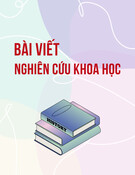



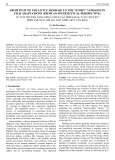
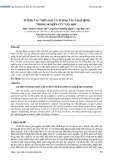
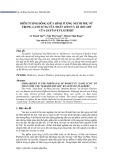
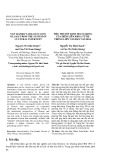
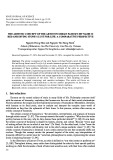
![Bộ câu hỏi trắc nghiệm Văn bản tiếng Việt [chuẩn nhất]](https://cdn.tailieu.vn/images/document/thumbnail/2025/20251127/thuynhung051106@gmail.com/135x160/24021764296609.jpg)
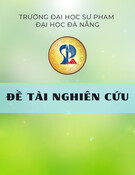

![Bài giảng Ngôn ngữ học đối chiếu Nguyễn Ngọc Chinh [PDF]](https://cdn.tailieu.vn/images/document/thumbnail/2025/20251101/vovu03/135x160/7471762139652.jpg)

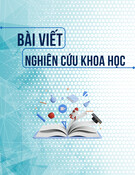
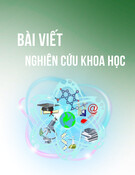

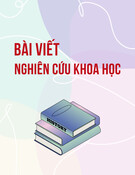
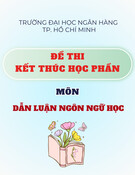
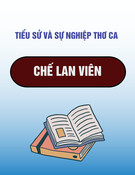
![Ngân hàng câu hỏi môn Tiếng Việt thực hành [chuẩn nhất]](https://cdn.tailieu.vn/images/document/thumbnail/2025/20251003/kimphuong1001/135x160/21861759464951.jpg)
![Bài giảng Văn học phương Tây và Mỹ Latinh [Tập hợp]](https://cdn.tailieu.vn/images/document/thumbnail/2025/20251003/kimphuong1001/135x160/31341759476045.jpg)
